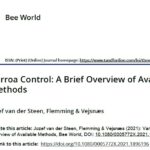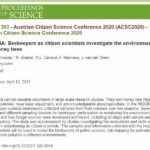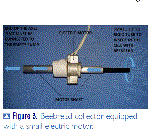19. Detection of Pesticide Residues from the APIStrip: Results from the nine countries participating in the INSIGNIA study in 2020
The practical sampling phase of the INSIGNIA study took place over the beekeeping seasons of 2019 and 2020. In 2019, three sets of data were available for statistical analysis, resulting from the lab analyses
of samples collected via the four matrices trialled for pesticide, biocide, veterinary medical product and varroacide monitoring via bee colonies , i.e. collected pollen, beebread, the Beehold tube and the APIStrip,
from Austria, Denmark and Greece. The UK had also participated in 2019 but the samples proved to be unsuitable for chemical analysis. The study extended to include nine countries in the 2020 beekeeping season: Austria, Denmark, Greece, the UK, Ireland, Belgium, France, Italy and Latvia. Statistical analysis of the data from 2019 identified the in – hive passive APIStrip sampler as the most effective matrix for the monitoring of pesticide residues via honey bees, and two to three colonies as a suitable number to use per apiary. Therefore the APIStrip was used in two colonies per beekeeper in the extended study in 2020, and nine apiaries were involved per country. Selection of the apiaries participating in 2020 was arranged
between national coordinators and beekeepers primarily on a pragmatic basis, such as ease of provision of practical advice and transfer of APIStrips from the beekeeper to the national coordinator, commitment and reliability of the beekeeper, rather than on the basis of land use around the apiary or other environmental criteria. Sampling was again carried out biweekly (fortnightly) as in 2019, with ten sampling rounds.




















